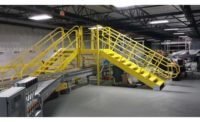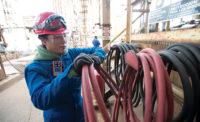An electronic nose typically identifies odors by detecting the “fingerprint” of a chemical compound across an array of sensors monitored by pattern-recognition software. E-nose technology is already in use across many industries, including agricultural, environmental, food, manufacturing, and the military.
At Brown University in Rhode Island, electrical engineer Jacob Rosenstein and colleagues are now taking electronic noses a hop, skip, and a boogie closer to the real thing with a device that actually sniffs odors, sucking up vapors in a premeditated pattern through four pathways, and moving those vapors across chemical and mechanical sensors.
“It felt like a natural thing, to make an extension of an electronic nose that adds more contextual information,” says Rosenstein. In addition to sniffing, their device, named TruffleBot, measures small pressure and temperature changes—physical characteristics that can be used to identify a smell.
E-noses come in a variety of architectures, but most rely exclusively on chemical sensors, such as metal oxides or conducting polymers. The TruffleBot goes a step further: A 3.5-inch-by-2-inch circuit board that sits atop a Raspberry Pi contains eight pairs of sensors in four rows of two. Each sensor pair includes a chemical sensor to detect vapors and a mechanical sensor (a digital barometer) to measure air pressure and temperature.
Then comes the sniffing bit: Odor samples are pushed across these sensors by small air pumps that can be programmed to take up puffs of air in a pattern. “When animals want to smell something, they don’t just passively expose themselves to the chemical. They’re actively sniffing for it—sampling the air and moving around—so the signals that are being received are not static,” says Rosenstein.
The system is flexible enough to swap in other types of chemical sensors, Rosenstein notes, and the overall device was relatively inexpensive—only US $150 in parts for the prototype.
Next, the engineers are working to improve accuracy and response time of the device and to add new air paths and sampling systems. “We’re definitely going to be working on improving the physical aspects of it,” says Rosenstein.
Source: https://spectrum.ieee.org


